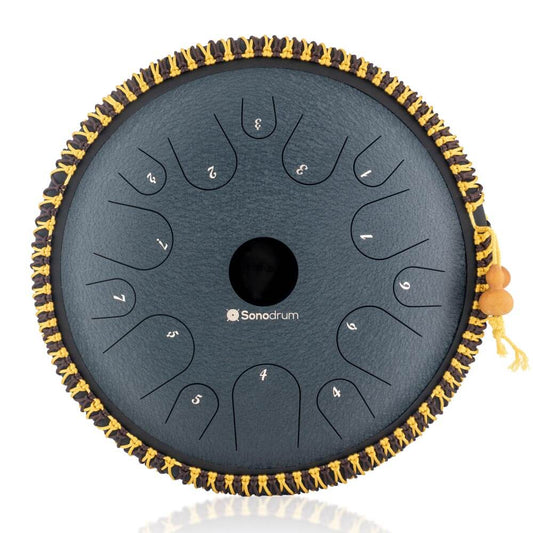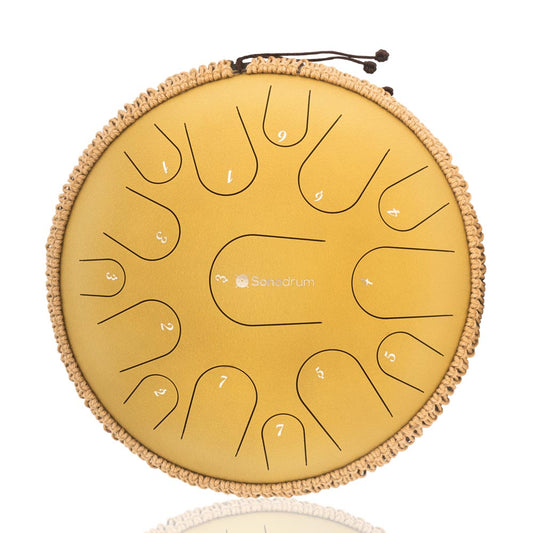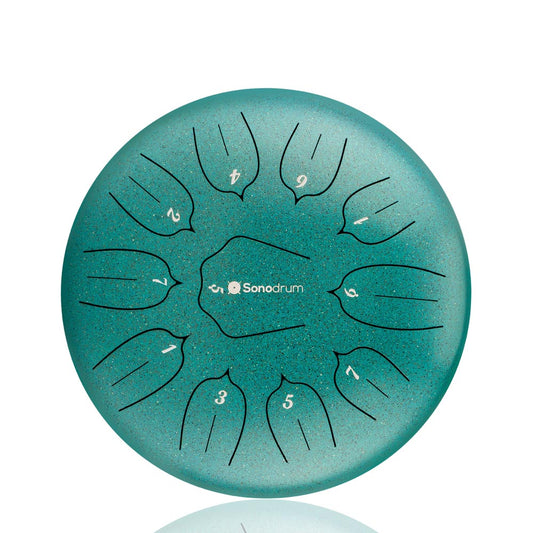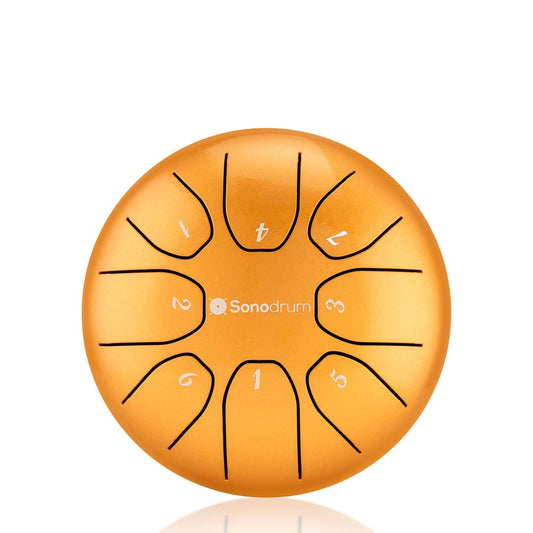Choosing the right Steel Tongue Drum can be a game-changer in your musical journey. Whether you're a complete beginner or an experienced musician, this unique instrument offers a soothing sound that appeals to everyone. But with so many options available, it can be overwhelming to know which one is the best fit for you. In this guide, we’ll walk you through key considerations to help you select the perfect Steel Tongue Drum that aligns with your musical preferences and goals.
1. Consider the Size and Number of Notes
The size of a Steel Tongue Drum affects both its sound and the complexity of the music you can create. Smaller drums, typically with fewer notes (around 6 to 8), offer simplicity and are great for beginners or those looking for a more meditative experience. These drums tend to produce clear, resonant sounds that are easy to play and enjoy.
Larger drums, with more notes (10 to 12 or even more), provide a broader range of sounds and allow for more complex compositions. These drums are ideal for musicians who want to explore diverse melodies and experiment with different musical scales.
If you're new to the Steel Tongue Drum, starting with a smaller drum may be the best way to familiarize yourself with the instrument. However, if you're an experienced musician or have a passion for intricate compositions, a larger drum will allow you to explore more advanced techniques and musical possibilities.
2. Choose the Right Scale for Your Sound
One of the most important aspects of selecting a Steel Tongue Drum is the scale it’s tuned to. Most Steel Tongue Drums are tuned to a pentatonic scale, which produces a pleasing and harmonious sound, perfect for meditation, relaxation, and improvisation.
If you're looking for more versatility, you might consider a drum tuned to a diatonic scale, which offers a wider range of musical possibilities, or even chromatic scales for a more complex and dynamic sound. Your choice of scale should align with your musical style, as well as the kind of atmosphere you wish to create while playing.
3. Material and Build Quality
Steel Tongue Drums are typically made from high-quality steel, which contributes to their rich, resonant sound. However, the quality of the steel can vary between manufacturers. When choosing a drum, consider the material and its durability.
High-grade steel drums tend to be more durable and produce a more refined, clear sound. Some manufacturers may even offer drums with a protective coating to prevent rust and enhance the lifespan of the instrument. If you're planning to use your drum for performances or long practice sessions, investing in a high-quality instrument will ensure that you get the best sound and durability.
4. Consider Your Playing Style and Preferences
Your playing style should influence the type of Steel Tongue Drum you choose. If you prefer a more gentle, meditative playing experience, a drum with a fewer number of notes and a softer sound will suit you best. On the other hand, if you enjoy rhythmic playing or incorporating different dynamics into your music, a drum with more notes and a larger range might be better suited to your style.
The material of the drum’s mallets is also worth considering. Some drums come with rubber mallets that produce a softer, mellower tone, while others include wooden mallets that create a sharper, more defined sound. Choose mallets that fit the kind of music you want to create.
5. Think About Portability
If you plan to take your Steel Tongue Drum on the go, portability is a key factor. Smaller drums are lightweight and easy to carry, making them perfect for travel, outdoor performances, or jam sessions. Larger drums, while offering more tonal possibilities, can be bulkier and may require a carrying case for protection.
Consider your lifestyle and how often you'll be moving your instrument when deciding on size and portability. If you're looking for an instrument that you can take anywhere, choose a more compact drum.
6. Budget Considerations
Steel Tongue Drums can vary greatly in price, depending on factors like the number of notes, the quality of materials, and the craftsmanship. While it’s tempting to go for the cheapest option, remember that a higher-quality drum will provide a better playing experience and last longer.
For beginners, it’s often best to start with a mid-range priced drum that offers a balance between quality and affordability. As you become more experienced, you may decide to invest in a premium instrument.
7. Personal Preference and Aesthetic
Lastly, don’t forget about the aesthetic appeal of your Steel Tongue Drum. These instruments come in a variety of colors, finishes, and designs, so you can choose one that resonates with your personal style. The visual aspect of the drum can enhance your overall experience, especially if you plan to display it or use it as part of a performance.
If you enjoy instruments like the Kalimba or the Handpan, you may also appreciate the artistic side of your Steel Tongue Drum. These instruments often have intricate designs and beautiful finishes, which can add to your musical experience.
Conclusion: Your Musical Journey Begins with the Right Steel Tongue Drum
Choosing the right Steel Tongue Drum is an exciting first step in your musical journey. By considering factors like size, scale, material, and your playing style, you can find the perfect drum that suits your needs. Whether you’re a beginner seeking simplicity or an advanced musician looking for versatility, there’s a Steel Tongue Drum that will help you create the music you love.
Don't forget to explore different options and listen to the sound of various drums before making your decision. With the right instrument in hand, you’ll be ready to embark on a musical adventure that brings creativity, relaxation, and joy.




